Transcription of 308R-16: Guide to External Curing of Concrete
1 Guide to External Curing of ConcreteReported by ACI Committee 308 ACI 308R-16 First PrintingMay 2016 ISBN: 978-1-942727-87-3 Guide to External Curing of ConcreteCopyright by the American Concrete Institute, Farmington Hills, MI. All rights reserved. This material may not be reproduced or copied, in whole or part, in any printed, mechanical, electronic, film, or other distribution and storage media, without the written consent of technical committees responsible for ACI committee reports and standards strive to avoid ambiguities, omissions, and errors in these documents. In spite of these efforts, the users of ACI documents occasionally find information or requirements that may be subject to more than one interpretation or may be incomplete or incorrect.
2 Users who have suggestions for the improvement of ACI documents are requested to contact ACI via the errata website at Proper use of this document includes periodically checking for errata for the most up-to-date committee documents are intended for the use of individuals who are competent to evaluate the significance and limitations of its content and recommendations and who will accept responsibility for the application of the material it contains. Individuals who use this publication in any way assume all risk and accept total responsibility for the application and use of this information in this publication is provided as is without warranty of any kind, either express or implied, including but not limited to, the implied warranties of merchantability, fitness for a particular purpose or and its members disclaim liability for damages of any kind, including any special, indirect, incidental, or consequential damages, including without limitation, lost revenues or lost profits.
3 Which may result from the use of this is the responsibility of the user of this document to establish health and safety practices appropriate to the specific circumstances involved with its use. ACI does not make any representations with regard to health and safety issues and the use of this document. The user must determine the applicability of all regulatory limitations before applying the document and must comply with all applicable laws and regulations, including but not limited to, United States Occupational Safety and Health Administration (OSHA) health and safety by governmental representatives in the work of the American Concrete Institute and in the development of Institute standards does not constitute governmental endorsement of ACI or the standards that it information.
4 ACI documents are available in print, by download, on CD-ROM, through electronic subscription, or reprint and may be obtained by contacting ACI standards and committee reports are gathered together in the annually revised ACI Manual of Concrete Practice (MCP).American Concrete Institute38800 Country Club DriveFarmington Hills, MI 48331 Phone: + : + Guide reviews and describes practices, procedures, materials, and monitoring methods for the External Curing of Concrete and provides guidance for specifying Curing procedures. Current Curing techniques are presented and commonly accep ted methods, proce-dures, and materials are described. Methods are given for Curing structures and buildings, pavements and other slabs-on-ground, and for mass Concrete .
5 Curing methods for several specific catego-ries of cement-based products are discussed in this materials, processes, quality control measures, and inspec-tions described in this document should be tested, monitored, or performed as applicable only by individuals holding the appro-priate ACI certifications or : cold weather construction; Curing compound; hot weather construction; mass Concrete ; reinforced Concrete ; sealer; shotcrete; 1 INTRODUCTION, p. Introduction, p. Curing , p. Curing and hydration of portland cement, p. Deliberate Curing procedures, p. Curing -affected zone, p. Concrete properties influenced by Curing , p. Effects of elevated temperature, p.
6 Sustainability, p. 14 CHAPTER 2 DEFINITIONS, p. 15 CHAPTER 3 Curing METHODS AND MATERIALS, p. Scope, p. Use of water for Curing Concrete , p. Initial Curing methods, p. Final Curing measures, p. Termination of Curing measures, p. Cold-weather protection and Curing , p. Hot-weather protection and Curing , p. 21 David M. Suchorski, ChairErik Holck, Vice ChairLawrence Homer Taber*, SecretaryACI 308R-16 Guide to External Curing of ConcreteReported by ACI Committee 308 ACI Committee Reports, Guides, and Commentaries are intended for guidance in planning, designing, executing, and inspecting construction. This document is intended for the use of individuals who are competent to evaluate the significance and limitations of its content and recommendations and who will accept responsibility for the application of the material it contains.
7 The American Concrete Institute disclaims any and all responsibility for the stated principles. The Institute shall not be liable for any loss or damage arising to this document shall not be made in contract documents. If items found in this document are desired by the Architect/Engineer to be a part of the contract documents, they shall be restated in mandatory language for incorporation by the 308R-16 supersedes ACI 308R-01 and was adopted and published May 2016, American Concrete rights reserved including rights of reproduction and use in any form or by any means, including the making of copies by any photo process, or by electronic or mechanical device, printed, written, or oral, or recording for sound or visual reproduc-tion or for use in any knowledge or retrieval system or device, unless permission in writing is obtained from the copyright MembersDale P.
8 BentzDianne CareyJennifer K. CrismanJonathan E. DongellMichael FaubelDale FisherSidney FreedmanMichael G. HernandezJohn C. HukeyCecil L. JonesFrank A. KozeliskiRonald L. Kozikowski LopezDarryl ManuelSteven F. McDonaldMike MurrayJohn W. RobertsPhilip A. SmithRichard E. Van HornJody R. WallDaniel WebberJohn B. Wojakowski*Chair of document MembersRalph C. BrunoJames N. Cornell IIBen E. EdwardsJerome H. FordR. Doug HootonDavid E. Accelerated Curing , p. Minimum Curing requirements, p. Temperature limits during Curing , p. 22 CHAPTER 4 Curing FOR DIFFERENT TYPES OF CONSTRUCTION, p. Pavements and other slabs on ground, p. Buildings, bridges, and other structures, p. Mass Concrete , p.
9 Curing colored Concrete floors and slabs, p. Specialty constructions, p. 25 CHAPTER 5 MONITORING Curing AND Curing EFFECTIVENESS, p. General, p. Evaluating environmental conditions, p. Means to verify application of Curing , p. Impact of Curing procedures on immediate environ-ment, p. Impact of Curing procedures on moisture and temperature within Concrete , p. Maturity method, p. Assessing Curing effectiveness, p. 29 CHAPTER 6 REFERENCES, p. 30 Authored references, p. 31 CHAPTER 1 IntroductionThe principles and practices of External Curing are appli-cable to all types of Concrete construction. This document does not fully address Curing for specialty Concrete and special construction techniques (refer to ), nor does it fully address internally cured Concrete .
10 For additional information on internally cured Concrete using preconditioned absorp-tive lightweight aggregates, refer to ACI (308-213)R. Curing measures, in general, are specified in ACI Curing measures directed toward the maintenance of satisfactory Concrete temperature under specific environmental condi-tions are addressed in greater detail in ACI 305R, ACI 306R, ACI 301, and ACI fundamental principles of External Curing remain the same as in the past; however, new research and methods of Curing are presented herein. Topics such as internal Curing , Curing at elevated temperatures, sustainability, Curing of moisture-sensitive flooring, sensors for mass Concrete Curing , and new Curing monitoring techniques have been added or enhanced in this CuringCuring is an action taken to maintain moisture and temperature conditions in a freshly placed cementitious mixture to allow hydraulic cement hydration and, if pozzo-lans are used, pozzolanic reactions to occur so that the potential properties of the mixture may develop.
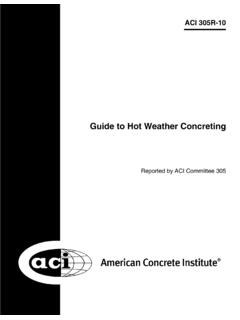
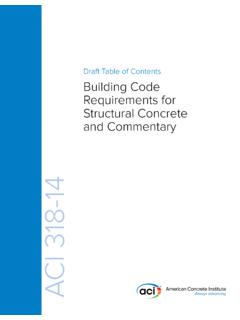
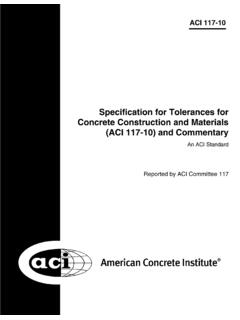
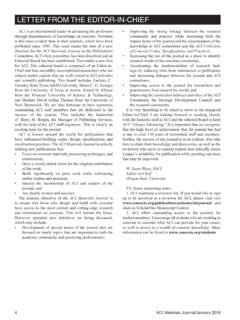
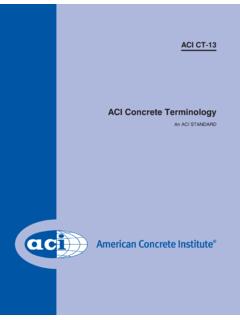
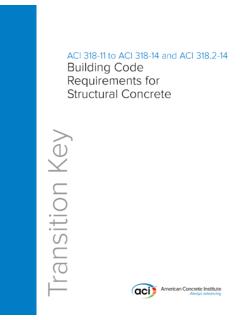
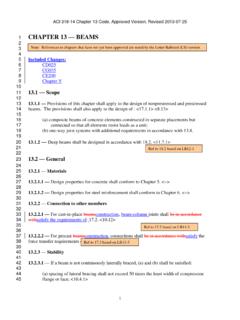
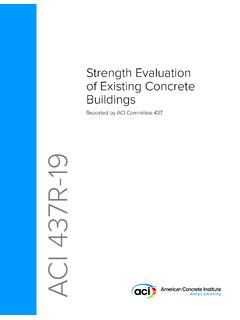
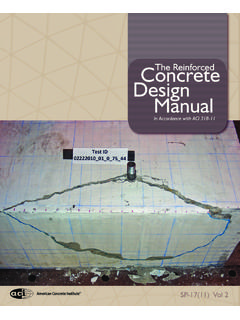
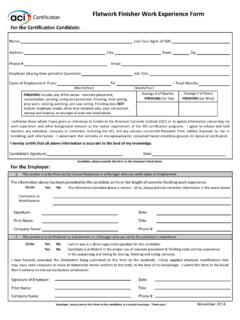
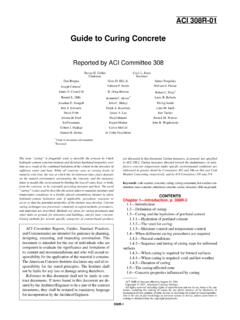
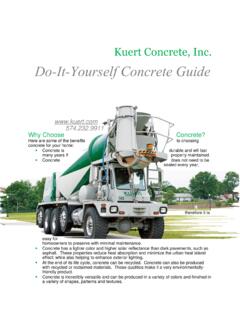
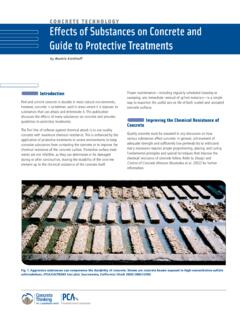
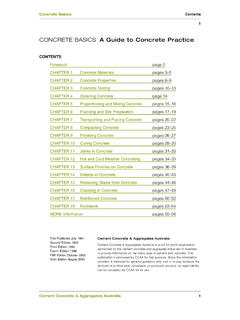
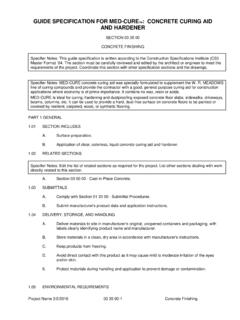
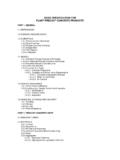

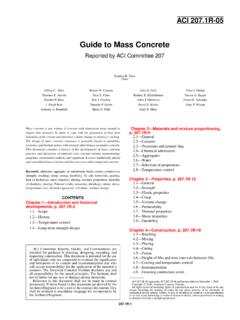
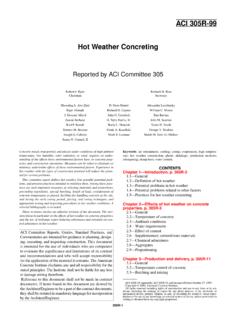
![6ITSVXIH F] %'- 'SQQMXXII - dl.mycivil.ir](/cache/preview/4/b/b/f/2/e/8/1/thumb-4bbf2e81b2b2df04c22714e49f0954ce.jpg)